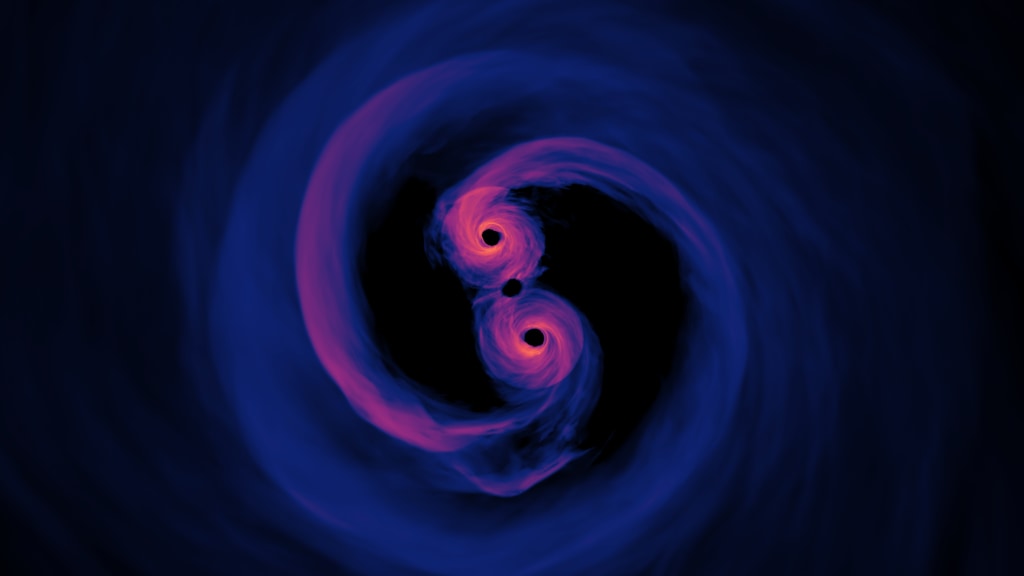Scientists have conducted simulations of 69 known binary systems of black holes. They came to the conclusion that depending on the conditions laid down at the beginning, the scenarios for the evolution of such a system might be different.

Double black holes
Stellar–mass black holes are the end result of the evolution of luminaries. Relatively recently, we could only observe them when they formed a pair with an ordinary star. However, gravitational wave detectors allowed scientists to see systems consisting of two similar objects.
Double black holes are in many ways similar to double stars. However, how these objects originated is still a mystery. There are two possible scenarios for their formation: “field binary evolution” and “dynamical assembly”.
The first scenario assumes the formation of such systems from binary stars. They flare up one after another as supernovae and remain in the same orbit as double black holes. At the same time, they retain their axes and the period of orbit, and they are the same for such singularities.
“Dynamic assembly” involves the formation of black holes independently of each other and later the formation of a binary system from them. This happens in dense environments, for example, in globular clusters. Recently, a paper has appeared describing how this happens.
Inconsistency of models
All scientists agree that among the open binary black holes there are those formed in the first way and those that arose due to dynamic assembly. But their ratio remains debatable. In order to resolve the contradictions, scientists analyzed 69 such systems.
The most important question that interested scientists is which, based on the observation data, these binary systems should have rotation parameters. However, the simulation result has shown that it is impossible to give an unambiguous answer to this question.
Depending on how the initial parameters are formulated, the rotation of the system components may vary. Different systems give the same rotation parameters for the same double black holes, then different.
As a result, which of the ways of formation is common remains unclear. Scientists suggest that the reason for this is a small sample. When the LIGO detector returns to work in 2023, it is expected that it will be able to open a double black hole every few days. Perhaps then it will be possible to get a more accurate answer to the question of their origin.
According to www.sciencealert.com
Follow us on Twitter to get the most interesting space news in time
https://twitter.com/ust_magazine

